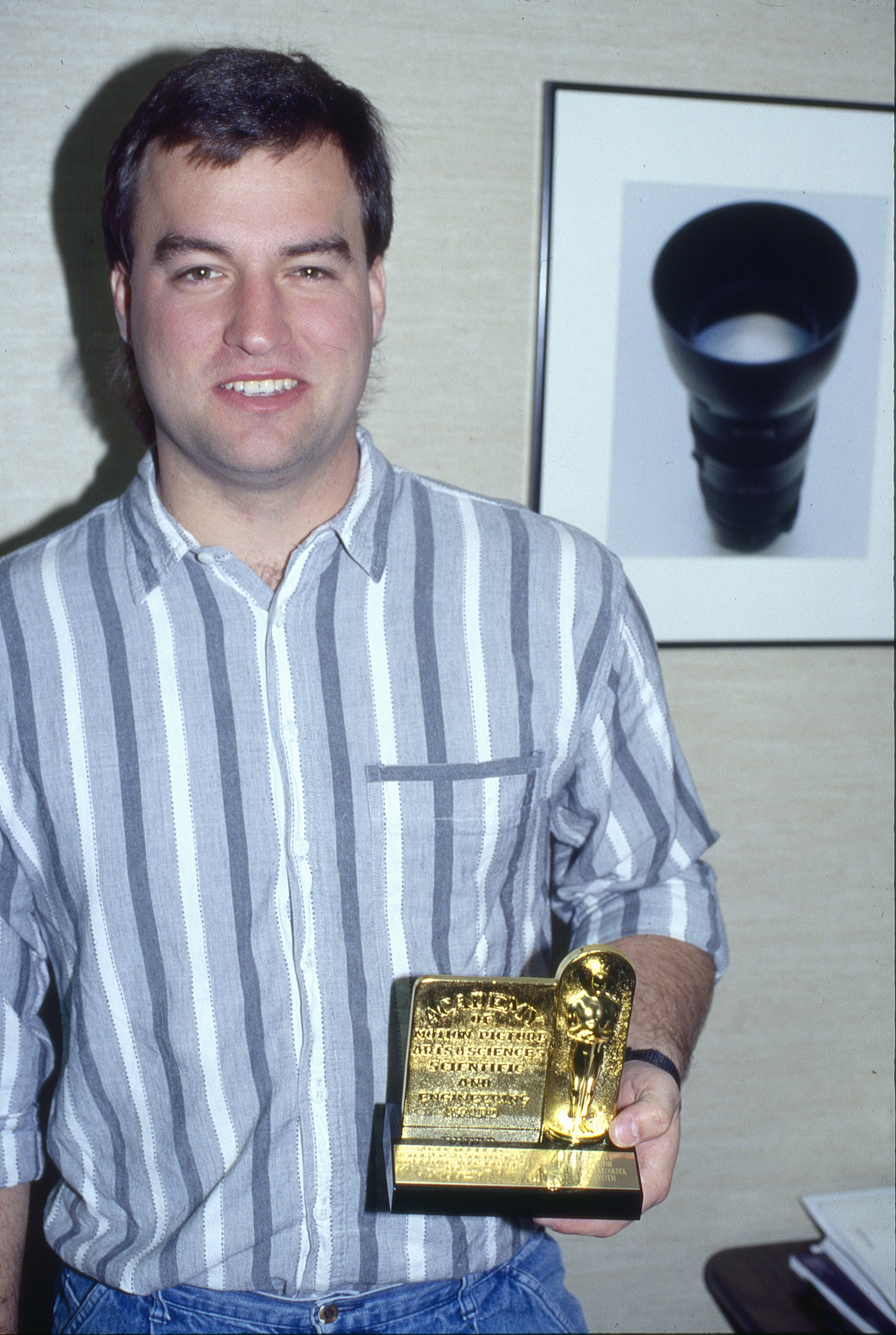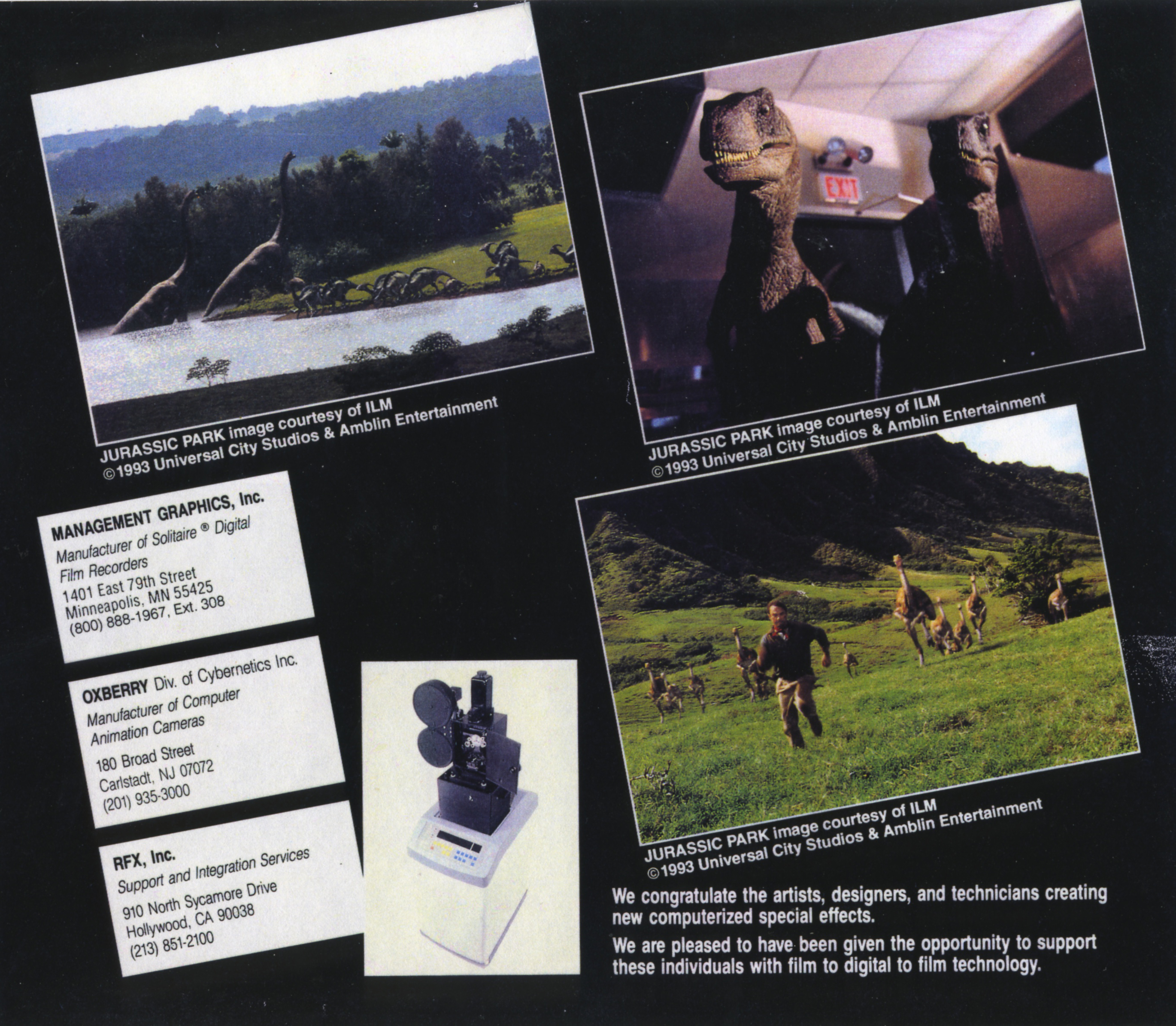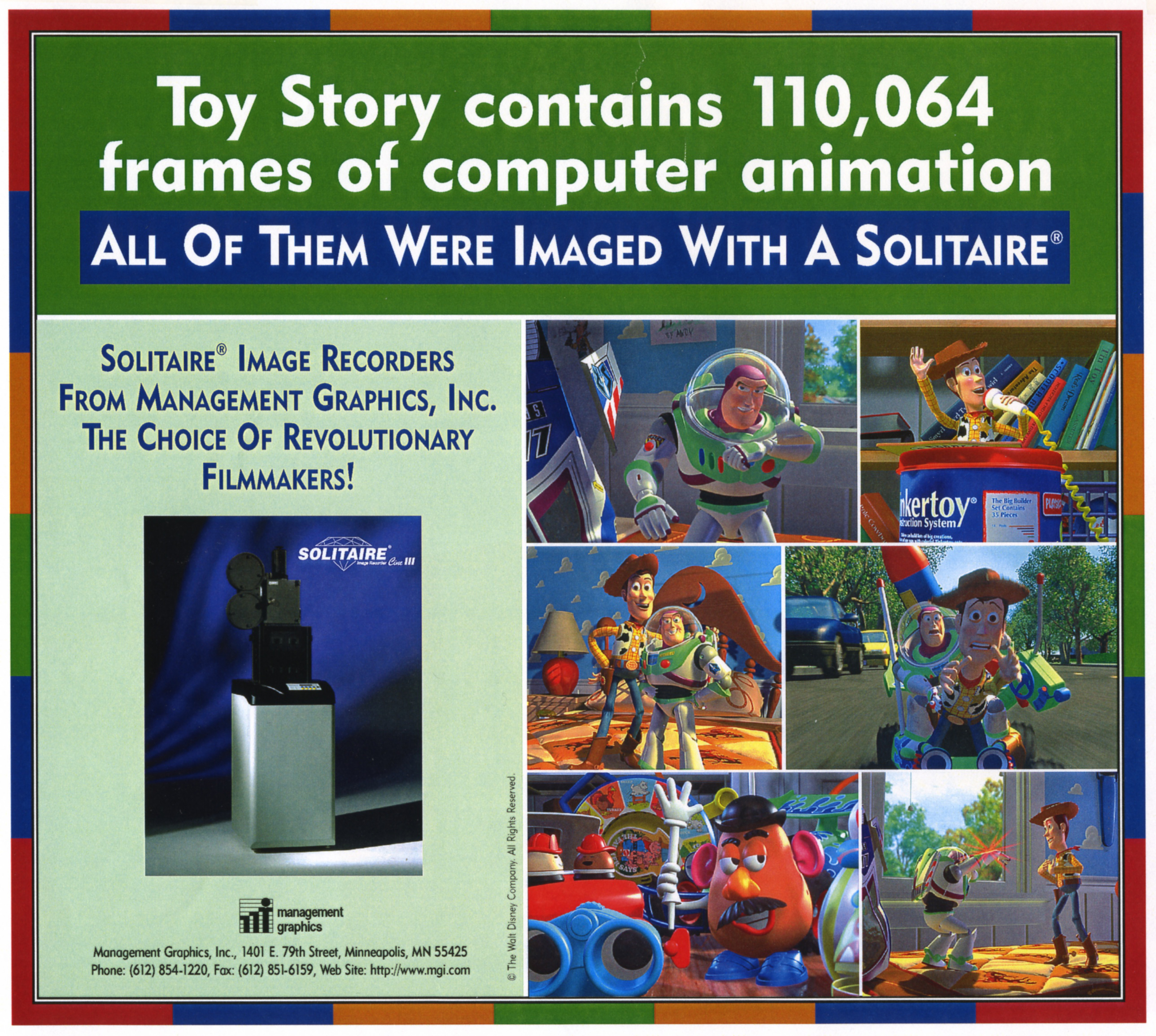I’m occasionally asked about the Academy Award that my colleagues at Management Graphics received. It was during the early days of computer-generated special effects in motion pictures. A product I contributed to, the Solitaire Image Recorder, was selected as a technology advance worthy of the Academy’s Technical Achievement Award. These awards are delivered in a parallel ceremony to the one we are all familiar with. It features celebrities of a different kind: nerds.
This is the story of how my friend Rick Keeney ended up on that award stage. It has been adapted from his personal account and is a bit technical, but don’t let those details detract from the overall story line.

Invention and Innovation
In the formative days of digital photographic imaging, output back to film was produced using specialized, often hand-built, image recorders that were difficult to align, calibrate, and keep running consistently. As one of the early companies in the business of building and selling graphics workstations, Management Graphics (MGI) recognized that the drawbacks of the available film recorders were limiting its workstation sales. MGI kicked off a development effort to build a film recorder that would be a robust and easy-to-use product.
One of the most innovative aspects of the new film recorder design was the use of a digital signal processor (DSP), to generate the X-Y raster scan waveforms and other signals driving the imaging screen. The precision of those signals was critical to producing a geometrically-aligned, focused, color-calibrated, high resolution image that would be exposed onto photographic film. The use of the DSP allowed the image to be adjusted by software instead of manually tweaking a bunch of analog circuit components using a screwdriver. Additionally, the digital output was extremely stable and repeatable. It did not drift with temperature or component-aging as was common with the traditional analog circuitry used to generate the raster scan on cathode ray tubes (CRTs) of that era.
Also, because the signals were digitally generated, it was possible to produce any desired waveform. With the appropriate computation, the raster scan waveforms could compensate for any misalignment and rotation of the CRT, lens, and film transport. It could also compensate for the distortion introduced by the geometry of the CRT and lens optics.
It also enabled the creation of an automatic alignment tool. A set of sensors sampled the location of key portions of the image geometry, and then the software would automatically compute the necessary coordinates to produce a perfectly aligned and focused image. The use of automatic digital alignment eliminated the tedious task of precisely aligning the optical components of the system during assembly. Literally, the CRT was bolted in, the deflection yoke clamped on, and wherever the image landed, it could be compensated for in software after the machine was assembled.
When the new “Solitaire” film recorder was introduced to the slide production industry, it was widely acclaimed as an innovative product. It became so popular that MGI faced a lot of pressure to unbundle it from being exclusively available with their proprietary workstations. Marketing and selling Solitaire independently turned out to be a very wise business decision. Right around that time, the first Windows systems were available, and soon after, some of the first Apple Macintosh computers with full RGB graphics. Management Graphics’ workstation business declined sharply, but the Solitaire Image Recorder became the industry standard workhorse, producing all manner of photographic output for a variety of imaging applications far beyond its initial mission of producing presentation slides. The company manufactured, sold, and serviced thousands of image recorder systems around the world.
One day, we had an inquiry from one of the early innovators of digital motion picture special effects in Hollywood. They were looking for our help in finding a parts vendor to replace the CRT in their hand-built film recorder that they had used to produce some digital special effects in films such as The Last Starfighter. We realized that because of our digital raster generation, the image size and orientation of our film recorder could easily be reconfigured to be suitable for 35mm motion picture frames which are half the size, and rotated, compared to the standard slide format. Instead of selling them parts, we pitched the idea of completely replacing their one-of-a-kind system, with our off-the-shelf product.
There was a bit of work to be done to adapt the system to be suitable for motion picture work. The film transport needed to be replaced by the type used for movie film instead of slide film. The digital interface needed to be developed to connect to the workstations that were used to process motion picture frames. These details were fairly straightforward engineering tasks and we quickly had a prototype system built.
Our Hollywood contact (who would later become our Hollywood dealer) challenged us to demonstrate that the machine could do the job. He provided some data for us to image. One of the most puzzling test clips was ten seconds of identical plain, blank gray frames. We wondered about the purpose in providing such a trivial test. But when they saw the footage, they were amazed! They told us that no other film recorder was stable enough to image all the frames exactly the same. When projected back at 24 frames per second, even a slow drift in the other image recorders was magnified into a visible pattern or flicker. Our machine had no visible drift, flicker or other artifacts. It was very stable. Of course, we knew that, but proving it to skeptical customers by going ahead and building a prototype was essential to making the sale.
Among our customers were Industrial Light and Magic (founded by George Lucas), and Pixar animation studio. When people saw those first few scenes in movies like Abyss and Terminator-2 that were produced on our machines, there was quickly a demand for many more such systems. We made the Solitaire Cine a standard part of the Management Graphics product line. It became an off-the-shelf solution for studios and digital effects shops in Hollywood and around the world.
One of the scenes shot on the Solitaire Image Recorder was the drifting feather opening shot in Forrest Gump that lasted for minutes, longer than a standard spool of film could provide. Another key milestone came when the first entirely digitally imaged feature film, Pixar’s Toy Story, was created using the film recorder that embodied our innovations and hard work.
Even though the Academy Award was for “adaptation” of the Solitaire Film Recorder for motion picture work, the true technical innovations came long before in the original design of the system. It was already the best film recorder on the planet. I am very proud to have played a part in that major paradigm shift in movie making technology which some have likened to being on par with the invention of “talkies” and “Technicolor”.
Richard Keeney, June 2016
Some promotional materials for the Solitaire Cine:




Pingback: A Retirement Tribute to Fred Nourbakhsh | Thor's Life-Notes